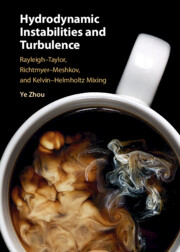 Hydrodynamic Instabilities and Turbulence
Hydrodynamic Instabilities and Turbulence from Part 3 - From the Microscopic to Cosmic Scales
Due to the time-consuming nature of fully 3D simulations of turbulence mixing induced by hydrodynamic instabilities, it is desirable to run computations in 2D when possible. But does 2D turbulence resemble 3D turbulence? The relevance of idealized 2D turbulence to certain aspects of atmospheric motion has been emphasized in many works. Yet molecular mixing occurs at the interfaces of the fluids, and the ratios of area-to-volume in three dimensions are very different than the length-to-area ratios in two dimensions. This has prompted some well-known scientists to claim that "two-dimensional turbulence, ... is a consequence of the construction of large computers." I will investigate this issue in detail and point out that the large-scale structures evolve over a similar time scale in 2D and 3D, indicating that 2D simulations are useful for providing some indication of the amount of instability growth at an interface.
To save this book to your Kindle, first ensure [email protected] is added to your Approved Personal Document E-mail List under your Personal Document Settings on the Manage Your Content and Devices page of your Amazon account. Then enter the ‘name’ part of your Kindle email address below. Find out more about saving to your Kindle.
Note you can select to save to either the @free.kindle.com or @kindle.com variations. ‘@free.kindle.com’ emails are free but can only be saved to your device when it is connected to wi-fi. ‘@kindle.com’ emails can be delivered even when you are not connected to wi-fi, but note that service fees apply.
Find out more about the Kindle Personal Document Service.
To save content items to your account, please confirm that you agree to abide by our usage policies. If this is the first time you use this feature, you will be asked to authorise Cambridge Core to connect with your account. Find out more about saving content to Dropbox.
To save content items to your account, please confirm that you agree to abide by our usage policies. If this is the first time you use this feature, you will be asked to authorise Cambridge Core to connect with your account. Find out more about saving content to Google Drive.